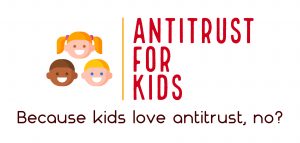Author: Luis Blanquez
A company using a blockchain––or perhaps even the blockchain itself––, with a sizeable share of a market, could be a monopolist subject to U.S. antitrust laws. But monopoly by itself isn’t illegal. Rather, a company must use its monopoly power to willfully maintain that power through anticompetitive exclusionary conduct.
Thus, a monopolization claim requires: (i) the possession of monopoly power in the relevant market––i.e. the ability to control output or raise prices profitability above those that would be charged in a competitive market; and (ii) the willful acquisition or maintenance of that power as distinguished from attaining it by having a superior product, business acumen, or even an accident of history. United States v. Grinnell Corp., 384 U.S. 563, 570-71 (1966).
The monopolist may also have a legitimate business justification for behaving in a way that prevents other firms from succeeding in the marketplace. For instance, the monopolist may be competing on the merits in a way that benefits consumers through greater efficiency or a unique set of products or services.
There are many ways a company may willfully acquire or maintain such monopoly power through anticompetitive exclusionary conduct. Some of them include exclusive supply or purchase agreements, tying, bundling, predatory pricing, or refusal to deal.
In this article we briefly discuss the refusal to deal theory of harm in the context of web3.
What is Web3?
The internet is an evolving creature. Thirty years ago, web 1.0 was all about browsing and reading information. As a consumer you had access to information, but few were able to publish online.
In the early 2000s the current web 2.0. arrived, and everyone started publishing their own web content and building communities. The problem today is that we have a centralized internet. Very few companies––big online platforms such as Google, Facebook or Amazon––control and own everyone’s online content and data. And they even use all that data to make money through, for instance, targeted advertising.
That’s why web3 is a necessary step in the right direction. As a consumer you can now access the internet without having to provide your personal data to these online gatekeepers. And you don’t need to give up ownership of the content you provide. Plus, you own your digital content and can execute digital agreements using crypto currencies. If wonder how is all that possible, the answer is through a new infrastructure called blockchain.
Refusal to Deal with Competitors or Customers
Competitors and Rivals
First, an illegal refusal to deal may occur when the monopolist refuses to deal with a competitor or rival. Under US antitrust laws such claims are challenging and rarely successful.
Although a company generally has no duty to deal with its rivals, courts have found antitrust liability in some limited scenarios when a monopolist (i) unilaterally outright refuses to sell a product to a rival that it made available to others (Verizon Commc’ns, Inc. v. Law Offs. of Curtis V. Trinko, LLP, 540 U.S. 398, 407–09 (2004), see also Aspen Skiing, 472 U.S. at 601; Otter Tail Power Co. v. United States, 410 U.S. 366, 377-78 (1973); OR (ii) had a prior voluntary and presumably profitable course of dealing with a competitor, but then terminated the relationship, giving up short-term profit from it in order to achieve an anticompetitive end. See Pac. Bell Tel. Co. v. linkLine Commc’ns, 555 U.S. 438, 442, 451 (2009), Novell, Inc. v. Microsoft Corp., 731 F.3d 1064 (10th Cir. 2013), cert. denied, 572 U.S. 1096 (2014).
Applied to the web3 world, this means that the validators of a blockchain could face antitrust scrutiny only if they had monopoly power, and (i) they previously allowed a competitor access to its blockchain but later agreed to exclude that rival, or (ii) sacrifice short-term profits without a reasonable business justification. This is, of course, unlikely considering the decentralized structure of blockchains and their need for gas fees to keep validators’ business profitable and the chain secured. When the validators are decentralized, they are not a single economic entity for purposes of the antitrust laws. But the risk would still differ depending on the blockchain and the level of decentralization.
What we might eventually see, however, is a company with monopoly power using a blockchain to exclude its rivals from the market through different anticompetitive conduct. For instance, we might see restrictions to only use one blockchain, to use smart contracts to impose loyalty rebates and other barriers to switch between blockchains, conditioning the use of one blockchain for a specific application or product by restricting the use of other blockchain or non-blockchain rivals’ infrastructure, or to require suppliers upstream or end customers downstream, to use the same blockchain for different products or applications.
Customers
Second, a refusal to deal may also take place when a monopolist refuses to deal with its customers downstream or suppliers upstream. A monopolist’s refusal to deal with customers or suppliers is lawful so long as the refusal is not the product of an anticompetitive agreement with other firms or part of a predatory or exclusionary strategy. Note, however, that a monopolist cannot decline to deal with customers as retaliation for those customers’ dealings with a competitor. That is often called a refusal to supply and is in a different doctrinal category than a refusal to deal. But, beyond these anticompetitive exceptions, private companies are typically free to exercise their own independent discretion to determine with whom they want to do business.
This test is broader than the one for competitors and requires a case-by-case legal and economic analysis to determine whether anticompetitive conduct exists. And web3 is not any different in this respect.
The Apple App Store and web3
Let’s take the Apple App Store as an example.
In the web2 world, Apple has created a “walled garden” in which Apple plays a significant curating role. Developers can distribute their apps to iOS devices only through Apple’s App Store and after Apple has reviewed an app to ensure that it meets certain security, privacy, content, and reliability requirements. Developers are also required to use Apple’s in-app payment processor (IAP) for any purchases that occur within their apps. Subject to some exceptions, Apple collects a 30% commission on initial app purchases and subsequent in-app purchases.
There are currently several related ongoing antitrust investigations and litigations worldwide about Apple’s conduct with its App Store. In the U.S., the Court of Appeals from the Ninth Circuit on the Epic Games saga held that Apple should not be considered a monopolist in the distribution of iOS apps. But this ruling also came with a string attached. The judge concluded that Apple did violate California’s unfair competition law and could not maintain anti-steering rules preventing users from learning about alternate payment options. If you want to learn more (see here). Both companies have recently asked the Ninth Circuit for a rehearing and the stakes are high.
Companies in web3 are now starting to deal with similar potentially anticompetitive behavior from web2 big tech companies. Uniswap, StepN and Damus are just three of many recent examples.
 The Antitrust Attorney Blog
The Antitrust Attorney Blog











